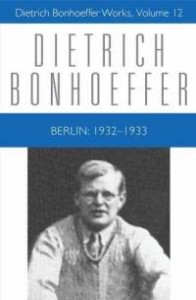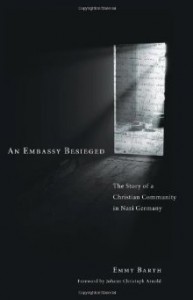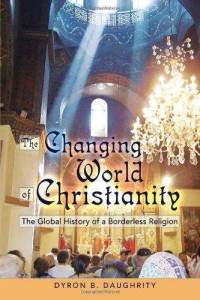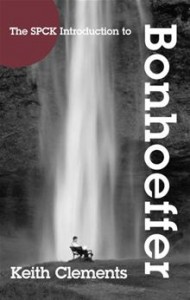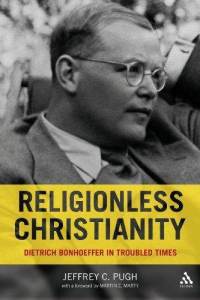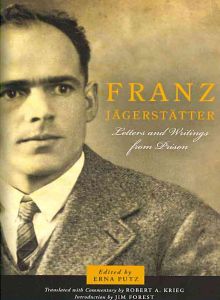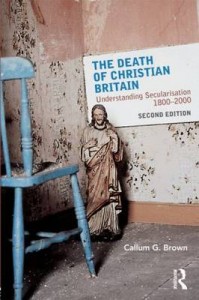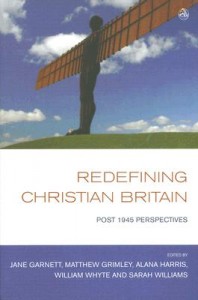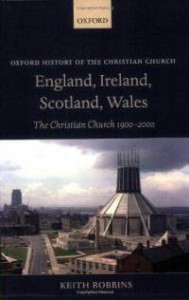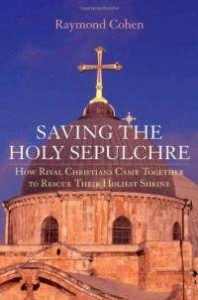Association of Contemporary Church Historians
(Arbeitsgemeinschaft kirchlicher Zeitgeschichtler)
John S. Conway, Editor. University of British Columbia
December 2009 — Vol. XV, no. 12
Dear Friends,
Contents:
Book Reviews:
a) R. Franzen, Ruth Rouse among students.
b) H. Arning, Die Macht des Heils und das Unheil der Macht, ed. T. Brechenmacher, Das Reichskonkordat 1933
c) I. Linden, Global Catholicism
d) E. Harder, A Kroeger, Russian Mennonites come to Canada
1a) Ruth Franzen, Ruth Rouse among students. Global, missiological and ecumenical perspectives.
(Studia missionalia svecana CV). Uppsala: Swedish Institute of Mission Research 2008. 428 Pp ISBN 978-91-977128-0-4
This well-researched biography of Ruth Rouse, a British woman missionary, who became the first woman to work on a world-wide basis as a travelling secretary to (women) students, provides a valuable record of the early twentieth century missionary efforts among university students, and as such is a contribution to the literature on the early stages of the ecumenical movement among the Christian churches. It is also a partial reparation for the lack of studies, either in general or in church history, of the role of women in this pioneering cause. These endeavours, the Scandinavian scholar Dr Franzen believes, have often, only because of persistent gender bias, been written out of the history of which Ruth Rouse was both a pathfinder and a pace-setter.
Ruth Rouse’s framework for her work among students was the newly-founded World’s Student Christian Federation in the years before and after the First World War. For many years she travelled widely to promote the message of Christian evangelism and ecumenical encounter in universities around the world. A hundred years later, her personal impact has inevitably been largely forgotten, but she fully deserves this tribute describing in full detail her small but significant role.
In part, her contributions have been overshadowed by those of her colleague, the General Secretary of the W.S.C.F., the charismatic and flamboyant American evangelist John R.Mott. Mott was in charge of the Federation from its founding in 1895 (in which he had been much involved) until 1920, and was subsequently Chairman of its Board until 1928. He was in fact far more of a General than a Secretary. Ruth Rouse was to prove to be a highly competent and loyal aide-de-camp. e was in fact far more of a General than a Secreyary She shared and fostered the enthusiasms of the late nineteenth-century missionary movement, as she and Mott criss-crossed the globe, inviting students everywhere to take part in the “evangelization of the world in this generation”. But this could only be done if the churches set aside their long-held doctrinal differences and engaged in an ecumenical witness of compelling power. As the future leaders of the churches, the commitment of students, especially theological students, was therefore crucial. Ruth Rouse’s contribution did much to encourage the desirable and inspiring momentum for this work.
Particularly the W.S.C.F’s frequent and heart-warming conferences on different continents or national settings provided an opportunity for students, both men and women, to realize the dimensions of their calling to be the ambassadors of Christ to the world’s “unchurched” populations, especially in the ever-expanding university world. This biography takes a special interest in Ruth Rouse’s impact on the women students of her generation.
Ruth Rouse came from a well-to-do London family, which encouraged the higher education of girls. In 1891 she joined the second generation of students at Girton College, Cambridge, and there encountered the intensely earnest climate of evangelical piety in the Student Volunteer Movement for Foreign Missions. This group had attracted considerable attention several years before when seven leading Cambridge graduates had publicly pledged to go to China as missionaries. Their example was encouraged and maintained in subsequent years. This impulse was further fostered by those who participated in the British Evangelicals’ summer gatherings at Keswick in the Lake District for “the promotion of personal holiness”.
In 1891, as she was about to graduate from Girton, Ruth Rouse attended her first Keswick Convention, which proved to be a momentous experience, especially because of the prevailing atmosphere of prayer. It was here that she first met John R.Mott. As a result she was asked to work for the Student Volunteer Movement, and a year later did so, first editing its magazine The Student Volunteer. In the following year, she became a full-time travelling secretary, visiting some sixty colleges in Britain, supporting existing Christian Unions or establishing new ones, and concentrating of the urgency and opportunities of the missionary task. She herself resolved to go to India.
At the same time, similar enthusiasms were being felt in other countries, particularly in Scandinavia. The desirability of having an international organization linking these endeavours was clear. In 1895 the World’s Student Christian Federation was established in Sweden. The appointment of Mott as the first executive officer was propitious. His vision, energy and readiness to travel gave the new structure an immediate impetus. The aim was to promote international Christian work for students by students. At first, the WSCF was not committed to being open to women. Nevertheless, in 1897 Ruth Rouse, as the travelling secretary of the British movement, was asked to visit the Scandinavian universities, thus making her first foreign tour to stimulate Christian work among women students. The ambience was still strongly pietistic. The emphasis was on the formation of bible-reading circles and on preparations for missionary work abroad.
Evidently Ruth Rouse’s first tour was regarded with satisfaction. Almost immediately she was personally invited by Mott to go to America for similar visits to women students, in collaboration with the YWCA. She could not fail to be impressed by the size of the country and of the student audiences. Already there were more than 800 student Christian associations to be visited, and the national conferences held every summer were exciting and memorable occasions.
Her resolve to go to India had to be postponed until 1899, but her dedication to missionary service was unchanged in her many addresses and conversations. Unlike many upper-class English visitors, she was not disdainful of American society, but rather soaked up the enthusiasm and progressive attitudes she found in student circles. She managed to combine both the spirit of evangelical revivalism with a newer emphasis on informed scientific knowledge and enquiry especially about the intended mission fields. Like so many others, she was confident that the evangelization of the world could be achieved in that generation.
However, when she at last arrived in India at the end of 1899, that confidence was badly shaken. For one thing, the whole cultural climate was so different. Evangelical Protestants were so few as to be invisible amongst the multitudes of other faiths. Educated Christian women students were even fewer. The resources provided for her mission were exiguous, but she was supposed to cover the whole country. Moreover she was not immune from the prevailing British imperial ideology about India, which, at best, combined a sense of paternalistic guardianship over less fortunate peoples with, at worst, a sense of racial superiority. Such feelings made it almost impossible to establish the kind of friendships with students which she had enjoyed in America and Europe. She must at times have doubted the possibility of success in this or indeed any future generation. During her two years in India she often fell ill, and was therefore compelled to return to Europe in 1902.
After recovering her health, she returned to her chosen mission field among women students, at first in Europe and later in other countries. But in many cases, she found a very difficult climate. Having won the right to study by means of a hard struggle against the prejudices of both society and the churches, many women students now adopted more radical stances, including, as for example in Berlin, a strongly anti-Christian militancy. Gaining a foothold among them was a remarkable achievement.
When Ruth Rouse began to work in partnership with John Mott, the position of women in the Federation was “delicate”. Also in some national movements and local Christian unions women students were treated with reserve and not given any positions of leadership; nor were their own initiatives encouraged. Many male leaders were unsure how to handle this clearly competent travelling secretary with her friendly manner and warm endorsement of the Federation’s ideals. Gradually her appeals on behalf of Mott’s vision and her capable organization of meetings and conferences gained her support. Particularly among women, she stressed the need for intensive bible study and commitment to future missionary work. She was clearly no social butterfly but instead gave the impression of a rather austere English personality whose call for service to Christ led her to be taken seriously. During these years she became an internationally widely respected ecumenical leader with growing influence among both women and men.
In 1910 the World Missionary Conference was held at Edinburgh, which many regard as the founding event for the church’s ecumenical movement. It was to be a milestone in Christian history and also for both Mott and Rouse. Because of his unsurpassed knowledge of the whole mission field, Mott was chosen to be the Conference Chairman. His public command of the subjects, his skilled organization and his far-sighted vision turned him into the leading ecumenical statesmen of his generation. In particular, Mott called for the abandonment of the narrow horizons, sectarian or dogmatic rigidity and national separateness, which characterized so many missionary societies. In addressing his audience, consisting mainly of the officials of these societies, he appealed for a united and more inclusive vision, which would be commensurate to the vast opportunities which the evangelization of the world required.
Ruth Rouse ably supported these ideals and henceforth was a devoted disciple of the cause of Christian unity. These were the years in which the missionary movement expanded rapidly, and the Federation also expanded to become an experimental laboratory of ecumenism.
The future seemed to be one of great promise.
But this unquenched optimism was to be irrevocably shattered by the outbreak of war in August 1914. What was worse was the fact that these supporters of the ecumenical and missionary movements were obliged to recognize that their fervent belief in Christ’s power to unite and reconcile all peoples was ineffective against the virulent national rivalries and hatreds which the war brought to the surface. No less deplorable was the readiness of a number of Christian leaders, on both sides, to claim that God was on their side and would give them imminent victory over their God-forsaken enemies. Worst of all, the cataclysms of war led all too soon to the slaughter of the battlefields. The mounting casualty lists, particularly from the western front, showed the disastrous toll of the whole cohort of young men who had provided the Federation with its leaders.
Mott, as an American, was still able to travel between the warring countries. But even he was obliged to change his tune. Ruth Rouse, being resident in London, was able to carry on her evangelistic task but on a more limited scale. But when she did go abroad, for instance to Scandinavia and South America, she sedulously avoided political references in her numerous speaking engagements. Hers was a Christian message of consolation and encouragement but on a personal basis. During the second part of the war she volunteered for war service, and devoted her time to looking after hospital casualties and refugees behind the lines.
At the end of the war, the Federation endeavoured to rebuild. Its national structures had remained intact, as had its older generation of leaders such as Mott. But their spirit of unity and reconciliation was still overlaid by the resentments and hostilities cased by the war. Not until 1920 was it possible to convene the first international and ecumenical meetings and then only on neutral ground in Holland or Switzerland. Mott`s leadership was challenged, and he felt obliged to resign as General Secretary. Particularly the Germans felt he had been too involved with President Wilson`s war aims in Russia. They also strongly resented the seizure of German missions in Africa and the Pacific, and they shared the rampant hostility of all German conservatives against the terms of the Versailles Treaty. The task of rebuilding relationships was a delicate and difficult one.
No less challenging was the need to support Europe`s students in their physical distress. In early 1920 Ruth Rouse visited Austria, Czechoslovakia and Poland and found students in a deplorable condition. These were mainly returning veterans, usually penniless. Their universities also needed much help. Dr Franzen discounts the Federation legend that Ruth Rouse responded to this drastic situation by cabling Mott: ‘Send million dollars’”. But in fact this huge sum was eventually received through collections and fund-raising drives fervently undertaken by many of the WSCF’s member movements. Her contribution to European Student Relief and the book she wrote about these efforts was seen as part of her Christian witness, and served to act as a unifying factor among the former enemies. What was supposed to be an emergency measure in the end became a permanent feature of inter-university cooperation, and still exists, undertaken by the World University Service. Something of Ruth Rouse`s dedicated idealism still survives.
The 1920s proved to be difficult years. The post-war traumas were far from resolved. The ‘war guilt’ question was still the source of German resentments. The cause of pacifism made little headway in such circles. But the younger generation in the Federation looked for a new and more positive beginning. Mott’s autocratic handling of business and fund-raising caused numerous tensions. He seemed unappreciative of his female colleagues. In 1924 Ruth Rouse decided to resign from the WSCF’s staff. Her goal of seeking equality of representation for women and non-western students had been largely achieved. But the emphasis was no longer on the evangelization of the world, let alone in this generation. And the difficulties of the Federation’s financial situation had only compounded the impression of ineffectiveness. Her frustrations were evident. And, as Franzen remarks, a 52 year old female student leader did not fit. Her time had passed, as indeed had Mott’s, though neither of them quite realized the fact. They belonged to the Federation’s past, not to its future.
From 1925 until her official retirement in 1938, Ruth Rouse served as Education Secretary to the Church of England Mission Board. But Franzen rightly sees this as a postlude to her career. Although she remained deeply committed to the missionary endeavour, the atmosphere had changed. The pious enthusiasm and devoted commitment of thirty years earlier was no longer there. And with the economic crises of the late 1920s and the ideological and political conflicts of the 1930s, the situation was inimical to an elderly woman Christian worker.
Given her wealth of ecumenical experience and her proven ability to write scores of reports and magazine articles, it was only natural that, in her retirement, she should be pressed to undertake larger works of history writing. During the second world war, she was able to travel to Yale University and consulted the significant holding of the Divinity School Library deposited by Mott, and from them composed an extremely interesting record of the WSCF’s first fifty years, which was published shortly after the war ended. She then went on to undertake her final great achievement, the writing and editing of the first history of the Ecumenical Movement, which provided the background for the newly-established World Council of Churches. For this work she spent some years in Geneva, writing several chapters herself and successfully coaxing the other contributors to provide their scripts in time for the whole work to appear before the WCC’s Second Assembly in 1954. At the age of 80, Ruth Rouse was a stately white-haired and very welcome figure in the World Council’s fellowship. She died at the age of 84 in 1956, only a few months after the passing of her colleague John R. Mott.
Published in English from a little-known Swedish academic press, Dr Franzen’s biography deserves to be read by a wider audience. (Hence the length of this review). It is a fitting tribute to a remarkable woman and to her long world-wide service to the missionary and ecumenical movements of the early twentieth century.
JSC
1b) Holger Arning, Die Macht des Heils und das Unheil der Macht. Diskurse von Katholizismus und Nationalsozialismus im Jahr 1934 – eine exemplarische Zeitschriftenanalyse (Politik- und Kommunikationswissenschaftliche Veroeffentlichungen der Goerres-Gesellschaft, Band 28). Paderborn: Ferdinand Schoeningh. 2008. 576 Pp. ISBN 978-3-506-76436-2.
Das Reichskonkordat 1933. Forschungstand, Kontroversen, Dokumente. Ed. Thomas Brechenmacher. (Veroeffentlichungen der Kommission fuer Zeitgeschichte, Reihe B, Bd 109) Paderborn: Ferdinand Schoeningh 2007 310 Pp. ISBN 978-3-506-76465-2
Arning’s massive dissertation presented to the Arts Faculty of the University of Muenster examines in minute detail the weekly issues of a Catholic newspaper in the Muenster region for the early months of 1934. In the author’s opinion, this was the crucial period when the ambivalence of the Catholic attitudes towards the newly-established National Socialist regime was displayed. The disadvantages of such a study are clear: it analyses only one expression of Catholic views in only one locality for only a limited period of a few months. Moreover, the early part of this study is mired in sociological jargon, which is bad enough in English, but even more off-putting in German. Historians of the Nazi period will not be likely to find any new revelations here, since the story of Catholic illusions and misapprehensions about Nazism is already well known.
Arning’s contribution is to give chapter and verse to the readiness with which leading Catholic spokesmen, in this case the editors and contributors, allowed themselves to be seduced by the myths and misrepresentations put out by the Nazi propagandists, but also to demonstrate the effective limits to such efforts. In 1933, to be sure, many Catholics especially in the staunchly reactionary diocese of Muenster, fell readily enough for the Nazis’ call for national renewal, opposition to the Communist threat, imposition of new patterns of leadership, new social and economic goals, and the revival of Germany’s international position. The signing of the Reich Concordat in the summer of 1933 seemed to virtually all Catholics to herald a new era of collaboration and an unprecedented opportunity for Catholic participation in national life. Hitler’s announced goals seemed to reflect closely the political stance of Germany’s conservative elites, so enthusiastic support was justified. Reservations about some of the Nazis’ more radical ambitions were brushed aside and warning signals ignored. The task of the journalists seemed to be to mobilize support for the new experiment and to overcome the reluctance of the Catholic laity to become involved.
But a year later, in June 1934, when Hitler launched his putsch against his internal opponents, and had one of the prominent Catholic lay leaders murdered, this honeymoon quickly evaporated. However, by then, as the columns of this newspaper show, Catholics had given away many hostages to fortune. Their enthusiastic endorsement of the Nazis’ campaigns, especially against both Communism and parliamentary democracy, and to a lesser extent against the alleged influence of the Jews, only served to stress the commonality of views and their approval of antidemocratic, hierarchical patterns of leadership. So too many of these authors found common ground with the Nazis in their hostility to modernism, pacifism, and liberalism in its various forms. Although the newspaper also sought to uphold Catholic doctrines in the purely theological sphere, its editors saw no reason to see any conflict with their new-found political sympathies. Not until late 1934 did the more far-sighted begin to realize that the Nazis’ goals were far more comprehensive and aggressive than they had supposed in earlier assessments. Only then did they see the need for some more coherent Catholic opposition to the Nazis’ totalitarian ambitions. But by then it was too late to begin to mobilize any effective Catholic ideological resistance, which would have had to be based on admission of their earlier misjudgements. The obligation of loyal obedience to the Fuehrer, to his party and to the nation had been so loudly proclaimed that any alternative was ruled out. The Catholics of Muenster were misled by their leaders, but clearly willingly so. This is the sad story with Arning fills out with explicit and compendious details.
Thomas Brechenmacher’s edition of a collection of conference papers on the subject of the ill-fated Reich Concordat of 1933 brings together the latest findings of research on this controversial topic, as well as reports on the archival and documentary sources now available. Also included for almost half of the volume (pp.153-294) are the papers written by the chief state civil servant Rudolf Buttmann, who was in charge of the negotiations concerning the implementation of the Concordat after its signature in July 1933. Although these had been seen by earlier historians of the Concordat, such as Fr. Ludwig Volk, we are now given the texts in full, along with some private observations about the Vatican officials, such as Cardinal Pacelli, later to become Pope Pius XII. The volume also includes helpful descriptions of other archives now available, such as those of the Munich Cardinal Michael Faulhaber, and of the still more controversial figure of Bishop Alois Hudal, who believed that Nazism and Catholicism could be reconciled. The first lectures provide an overview of the historical and moral issues aroused by the Concordat, which are still resounding even seventy-five years later. Particular attention was paid to the hefty debate in the late 1970s between a noted Protestant church historian, Klaus Scholder and the doyen of the German Catholic historians, Konrad Repgen. The issue revolved around the question whether the Vatican, in its desire to achieve a Concordat, sacrificed the future of the German Center Party, mainly Catholics, who then became victims to Nazi repression. Critics of the Concordat have always argued that the Center Party could have been a centre of resistance to Nazi ambitions but was betrayed by the Vatican for its own narrower institutional advantage. Unfortunately Scholder died many years ago, but luckily Professor Repgen, who is still alive, in this 2004 conference made a spirited defence of the Vatican policy. His autobiographical reminiscences, and careful evaluation of the sources, added much to the conference, and set an example to his junior colleagues. But even now, when the archival sources are virtually all available, the debate still continues as to whether the Church was at fault for encouraging the kind of illusions among Catholics to which Arning has drawn attention, or for not admitting its error in judgment and mobilizing its forces for a very different kind of reaction than that which greeted the signing of the Concordat in July 1933.
JSC
1c) Ian Linden, Global Catholicism : Diversity and Change since Vatican II, (Hurst & Company, London, 2009, 978 – 1 – 85065 – 956 – 3)
For anyone who wants an introduction to Roman Catholicism, of a non-Roman variety, this is the book. It starts with three chapters of background, one on the church before the Second Vatican Council, and two on the Council itself. These are quite conventional but necessary as preparation for what follows, which is an account of the church outside Europe and North America — these continents are barely mentioned. And that they are barely mentioned is because they no longer set the pace.
There are two chapters on Latin America where the story begins with a wealthy elite and military dictatorships, mostly propped up by the CIA. Most people are poor and kept poor. The church has only tenuous connections to the population, has a surprisingly foreign set of clergy, and achieves realignment with the poor only against much opposition. But out of this comes liberation theology, with all its excesses as well as its heroes and martyrs, and if the theology fades the bias to the poor gets into the bloodstream of the wider church. Meanwhile Rome blows hot and cold, John Paul II being understandably fixated with the danger of Marxism, though Paul VI had been more open to new developments.
The story then moves to the Philippines and to South Africa, where the church was, as in Rhodesia, generally inert in the face of apartheid. Archbishop Hurley is the exception here, as with Bishop Lamont in Rhodesia his being Irish was a major factor in his political outlook. Rwanda and Zimbabwe are examined in some detail, though “the long walk to freedom is full of pitfalls and may not end in the Promised Land but in tragedy.” As it did in both these lands. And Malawi is the last example studied in detail.
Rome is usually though not always “influenced , one way or another, by models of authority found outside the church, notably kingship and the Roman Empire. Democracy for several centuries played a negative role, defining what the Catholic Church was not.” And there is a “tension between universality and particularity”, the universal being the European, and the particular being the African, Asian, or Latin American. The present Pope Benedict XVI had “referred to a Hellenic Christian heritage safeguarded in good times and bad by European Catholicism” This was a step back from Paul VI in Kampala seeking an African Christianity. And the subject of gender, which was ignored by the liberation theologians, has also been ignored by Rome. This is particularly serious when the leaders in work for the poor are so often women religious.
The final sentence of the book sums up the argument, “the days of the old Eurocentric church directed by Europeans are numbered. The future conversation about Catholicism in the twenty-first century will be conducted increasingly by Latin Americans, Africans, and Asians.”
Gavin White, St Andrews, Scotland
1d) Ernie Harder, Mostly Mennonite, Stories of Jacob and Mary Harder, Abbotsford, B.C, 2009. ISBN 978-0-9813494-0-4
Arthur Kroeger, Hard Passage. A Mennonite family’s long journey from Russia to Canada. Edmonton: University of Alberta Press. 2007. ISBN 13:978-0-88864-473-2
Mennonites are an offshoot of the Anabaptists, a radical Protestant group who derive their name from their Reformation leader Menno Simons. He called on his followers to break away from the authority of both church and state, to form independent communities dedicated to personal salvation, to abstain from worldly affairs and in particular to reject any form of military activities. This combination of fervent piety and pacifism remained characteristic. It led to much harassment and hostility, even enforced exile from their original German base. The experience of hardship and persecution entered deeply into the Mennonite mentality, and was met with impressive devotion and commitment to their ideals.
In the eighteenth century, Catherine the Great of Russia invited a large cohort of these hard-working and God-fearing peasants to settle in what is now the Ukraine and to cultivate vacant lands west of the River Dnieper. Later their offspring founded similar colonies still further east in mid-Siberia. These flourished as self-contained communities, rigidly maintaining their doctrinal beliefs as well as their German-language schools and social institutions. But they had little to do with their Russian neighbours, separated from them by religion, language and culture.
Following the Russian Revolution of 1917, these Mennonites colonies fell on hard times,
being considered alien and unassimilated by the new Soviet rulers. The violence of the civil war was followed by forcible confiscations, depredations, and enforced agricultural contributions. In the early 1920s drought caused widespread famine. Subjected to both physical and religious oppression, many of these Russian Mennonites began to look elsewhere for rescue. They believed they would find in Canada a safe haven where they could take up new farms and also would be exempt from military conscription. They were encouraged by the change in Canadian immigration policies of the mid-1920s, and by the Canadian railway companies who sought new settlers for their vacant lands on the prairies, and were ready to advance loans for their travel costs. But the process of getting out of the Soviet Union, and re-establishing themselves so far away on another continent constituted what Arthur Kroeger rightly calls “A Hard Passage”.
Both these authors depict the same story of persecution, exile, hardship and eventual recovery on Canada’s safer shores. Both recapitulate what may be called the early twentieth century Mennonite syndrome for these Russian-German-Canadian pilgrims. Only their group solidarity, their close family connections and their religious loyalties enabled them to survive these experiences and bring them to a happy conclusion. These reminiscences were written by the Canadian-born sons of families who suffered through these traumatic events. Their surviving records and memories enabled these authors to reconstruct the lost and now almost forgotten sufferings and hardships through which their parents lived.
Ernie Harder successfully evokes the story of his parents, Jake and Mary Harder, who were born in the pre-revolutionary and pre-mechanical days of subsistence farming in the bleak Russian climate. They grew up in the days of drought and famine, and hence were ready to seize the opportunity to leave Russia behind. Luckily, Jake Harder lived to a great age and his son has meticulously followed up on all his numerous relatives in Canada, the United States and Russia. These were closely-knit families, frequently intermarrying and with a strong devotion to their group, so that an outside reader can easily be overwhelmed by the cross-connections of people having the same names and outlooks. Particularly good are the descriptions of pre-1914 Siberian farming, as each Mennonite colony provided assistance to the others when needed. No less graphic are the memories of the early days in Canada. Although young and enterprising, the Harders, like so many others, suffered from the hardships of the Depression. They had no ready resources to fall back on, but were eventually able to resettle in British Columbia and took advantage of fruit growing in the Fraser Valley. They prospered, inter-married and lived out their days in serenity and peace. Ernie and his 90-year old father were even able to revisit Siberia, where of course no trace remained of the Mennonites` former presence, except for a ruined and overgrown graveyard.
For his part, Arthur Kroger was much helped by inheriting from his father Heinrich an old wooden box containing hand-written documents in German about his upbringing in the Mennonite settlements in the Ukraine. The same picture of back-breaking subsistence farming in independent and self-governing communities is recorded in diary entries up to 1914. These records also make it clear that there was virtually no interaction with their Russian neighbours, and needless to say no intermarriages. There were considerable religious disagreements, with the Mennonite Brethren adopting a more rigid Puritanism, which again restricted their social boundaries. But all were overwhelmed by the anarchy and violence after the Revolution, when both Red and White armies campaigned and plundered across their lands. It was to be the first phase of the destruction of the Mennonite community life in Russia. A climate of terrorization and fear prevailed. Subsequently drought and famine caused further hardships. Relief supplies from North America did not arrive until early 1922. But hyper-inflation and Soviet depredations continued. The Mennonites increasingly sought to escape.
Fortunately the new Liberal government in Ottawa looked favourably on bringing in more settlers. The railway officials also regarded Mennonites as `immigrants of the highest type`. The first departures took place in 1923, but Heinrich and Helena Kroeger only followed in 1926, obviously with heavy hearts about leaving behind their Russian friends and relatives, whom they were never likely to see again.
The Russian Mennonites were due to be resettled in Alberta, on land which formed part of the so-called Palliser Triangle, notorious for its poor soil, drought-ridden climate and searing summers. The final years of the 1920s and all of the 1930s saw these conditions predominate. For a penniless family with five small children, who could bring with them little more than their hand luggage, the struggle for survival was a grim one.
Their burdens were only increased when two more sons, including the author Arthur, were born in Alberta. Throughout the 1930s they were forced to depend on relief supplies, both private and public. By 1936 three million acres of abandoned farmland spanned the three Prairie provinces. Not until 1939 did the rains return and the crops improve. In the meantime the family eked out a miserable existence earning only some scarce cash from casual labour on farms in the neighbourhood. . The Mennonite Colonization Board could do little to help, having far too many claims on its limited bounty. In addition they faced considerable hostility from the local population being considered `foreign` immigrants receiving benefits which only Canadians `deserved`. The politicians proved equally mean-spirited. As Kroeger points out, the scale of the disasters they lived through is today unimaginable.
From the end of the 1930s the family`s circumstances improved, and the author`s description of his boyhood years in the rural and remote Prairie farmlands is evocative. He later went on to gain a Rhodes scholarship to Oxford and to have a distinguished career in the federal civil service.
Over the last half century, the former Russian Mennonites have become more and more assimilated into their new Canadian homeland. They no longer marry only each other, and the younger partners frequently explore a wider range of religious affiliations. Many Mennonites no longer consider themselves pacifists. Low German is no longer spoken, except among a few elderly persons. Like their Mennonite cousins who emigrated directly from Germany to Manitoba and Saskatchewan, but unlike the Hutterites, these Russian exiles did not seek to rebuild their separate agricultural colonies on the Prairies. Instead, they have moved increasingly to the towns and cities, and now participate in a wide variety of professions. Inevitably the Mennonite identity has been diluted, though such names as Jantzen, Friesen, Wiebe, Harder, Kroeger and Brauer still remind us of the Mennonites` contributions. But the consciousness of their former European background has also waned. These two authors are therefore to be congratulated in rescuing for a wider audience a small portion of their now disappearing Russian-born heritage.
(Mr. Harder’s book can be obtained by contacting him at www.mostlymennonite.ca)
JSC
I shall shortly be sending you all another letter about the future of this Newsletter.
It remains only to wish all of you a very blessed and relaxing holiday season over Christmas and all the best for your health and endeavours in 2010.
John Conway
University of British Columbia

